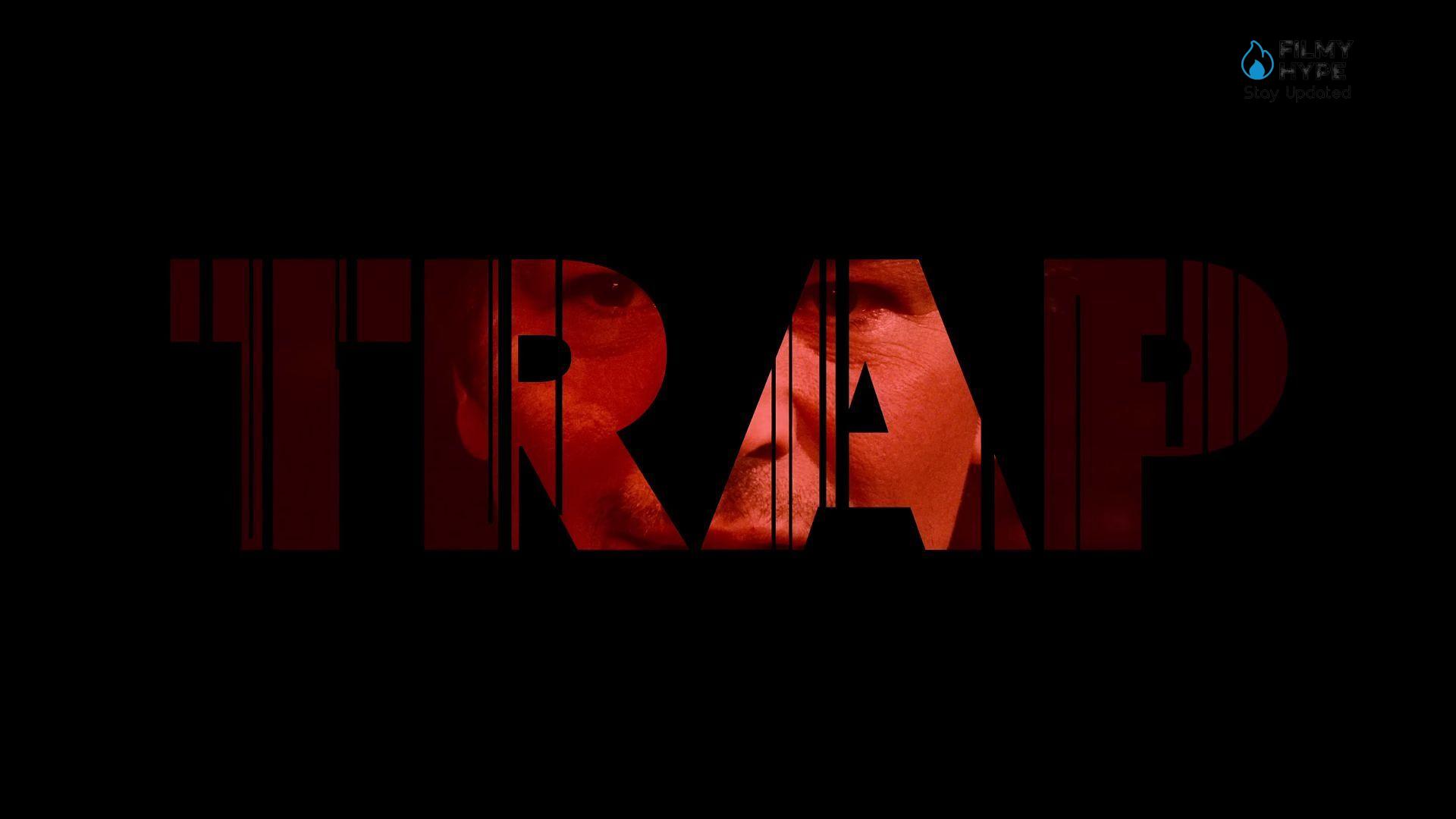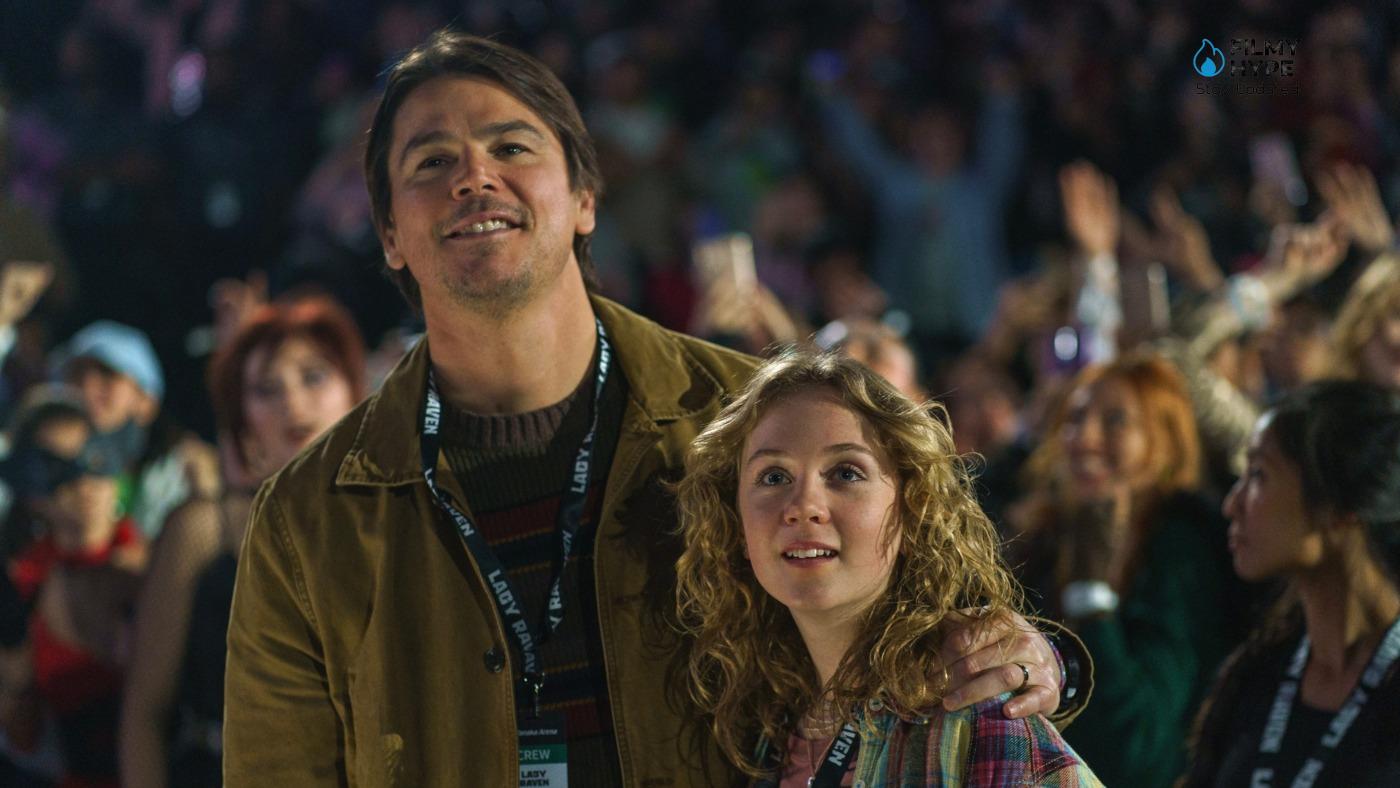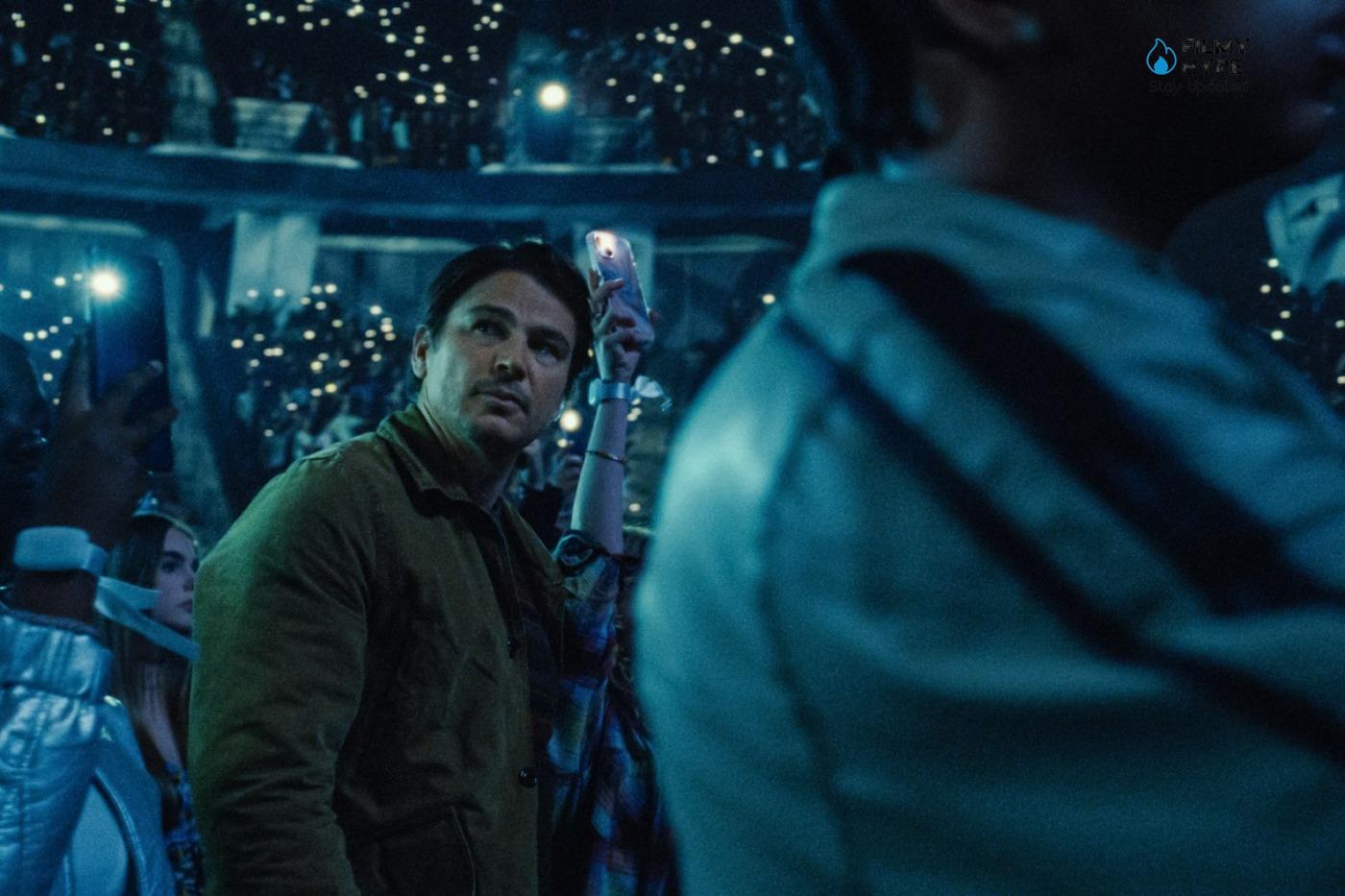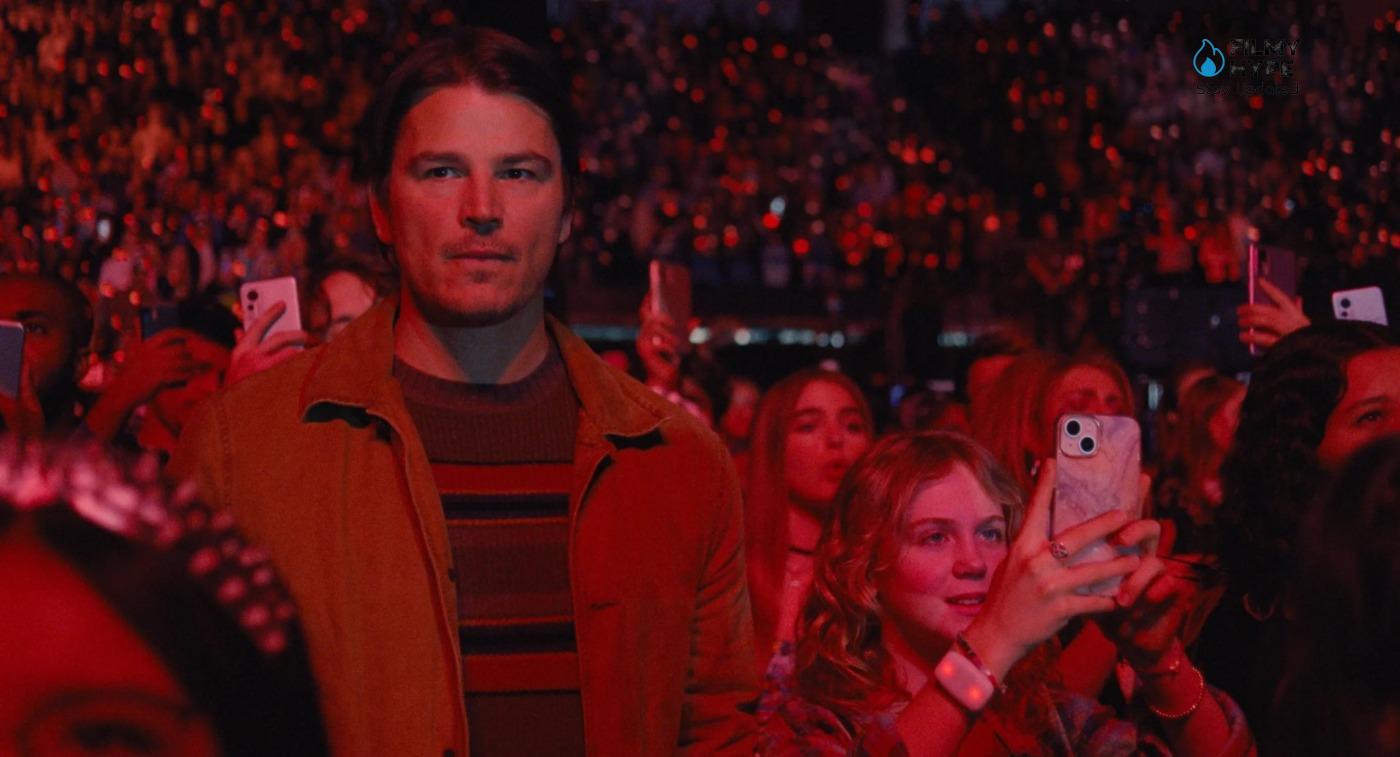Trap Movie Review: M. Night Shyamalan Proves to Be a Director with Many Aces Up His Sleeve!
Cast: Josh Hartnett, Ariel Donoghue, Saleka Night Shyamalan, Alison Pill, Hayley Mills, Jonathan Langdon
Director: M. Night Shyamalan
Where to Watch: In Theaters
Filmyhype.com Ratings: 4/5 (four stars)
Trap, the new thriller by M. Night Shyamalan, reflects on the relationships between parents and children from a thriller perspective. After the conclusion of his very personal (anti) superhero trilogy, M. Night Shyamalan has started grinding again like he probably hadn’t in years, stuffing an already extraordinary career with a series of small cinematic treatises in which he deconstructed genres, disregarding and overturning rules and expectations, to talk about his obsessions, old and new. As a great social narrator, the Indian-American filmmaker has decided to raise the bar, further deepening his analyses, delving into the divine and the reaction of human nature in the face of imponderable challenges, and placing himself and his current condition not only as part of the equation but also as a lens through which to frame each story, without giving up his trademark pop. Trap, his latest film, in theaters from August 7, is the culmination of this career arc since it is a film that brings to maturity all the levels of reading mentioned above, respecting the personal key and the usual cinematic format with one, great, exception.

We are not talking about the shifting of the plot twist from the end to the beginning (because in reality the real revelation always remains located in the conclusion), but of the total immersion in the mind of its sought-after protagonist, played by a probably never so good Josh Hartnett. In the first part of the film, the only possible point of view for the spectator is his, without filters or supports, indeed, enhanced by contrasts with what surrounds him. In this case, a look devoid of emotions, while everything around him explodes, like a guy at a concert who can’t even sing in the middle of a crowd of screaming people. For almost ten years, M. Night Shyamalan has reinvented himself by going back to his roots, leaving behind the mammoth productions to focus on small-scale thrillers, which he produces on his own in collaboration with partners like Blumhouse. A stratagem that has allowed him to complete his new feature film without interruptions during the double strike of writers and actors in 2023, since Warner Bros., which distributes the film, only bought the project once it was completed. And here he is, ready to amaze audiences in theaters in the last weeks of the summer, with this new tense film that we talk about in our review of Trap.
Trap Movie Review: The Story Plot
Cooper, a firefighter by profession, accompanies his teenage daughter to a concert by the famous singer Lady Raven. But something doesn’t convince him: even considering the artist’s fame, the security seems decidedly excessive. One of the staff inadvertently reveals to him, that the concert is part of a law enforcement operation to capture a vicious local serial killer known as the Butcher. Ironically, the killer is none other than Cooper, who is remotely monitoring his most recent victim, who is still alive (for now). As the minutes pass, and with his daughter blissfully unaware of everything, he asks himself two questions: how did they realize he would be there that day? And with all the exits blocked, will it be possible to leave the concert without ending up in jail?
The idea behind the plot of Trap is quite simple and has already been used in several other very successful films (let’s mention Live Murder, just to name one), that is, a manhunt in a public context in which thousands of individuals are present. In the film we are talking about, there is a concert by a possible Taylor Swift film version, played for the occasion by none other than Shyamalan’s daughter, Saleka, who sings, but also writes, all the songs in the film. The presence of the girl in the cast in such an important role is the first clue of the filmmaker’s desire to put himself in the film; the other is that the man to be captured is a father, who went to the event with his little daughter to spend an unforgettable evening with her. A father, but also a serial killer, “The Butcher” for the newspapers, for us simply Cooper (Hartnett). Don’t shout spoilers, the true identity of the protagonist is already in the trailers and, more importantly, in the economy of the film, this revelation is only the trigger for what follows.

What is important is the mastery in the use of the change of point of view as a determining factor for the characterization of the narration, especially when it occurs in the thriller. One of the Hitchcockian teachings par excellence (it is no coincidence that a particular film by the British director is cited in the title) becomes the leitmotif of a film that delves into the mind of a ruthless serial killer as Shyamalan has never done before and with an elegance and a sense of narrative rhythm out of the ordinary. There are no more psychiatrists, there are no relatives, there are no kindred spirits. There is only an elderly but rocky profiler, whose figure however has more of the sense of an alternative narration of the story than anything else. Like a voice in headphones that speaks to you while you do or see something else. The level of risk increases further when Trap‘s story takes us away from the place where the concert takes place, even risking a rather clear shift in terms of direction (almost in antithesis with the first part, to the extent that it becomes irremediably frenetic when before, acting as the serial killer’s point of view, it should have been firm and uncompromising) and adjusting the writing ambitions, gradually arriving at revealing all the cards.
Trap Movie Review and Analysis
Trap is a film with two Shyamalans and two different cinematic senses, linked together by the deconstruction of the thriller genre and the poetics of a director who is lucid like a few other times with the courage to try to talk about everything that interests him through a simple story (even simplistic in some passages), but incredibly functional. The film talks about identity and appearance, using the geography of an auditorium where a show is being staged as a cover to carry out a real hunt with a wrist so sure because trained over the years. The game of make-believe is proposed through continuous disguises, passages from in front of and behind the scenes, and the will to show screens, CCTV cameras, and police walkie-talkies. The pinnacle of this linguistic investigation is the revelation of the person behind the superstar, the girl on stage with thousands of fans screaming her name. The goddess of the event and at the same time perhaps the most human being among all those present, who gets to put herself on the line by breaking the mechanism of social media communication, where everything you see must be careful to only give the idea of reality to work.
At the heart of Trap and therefore of its analysis is undeniably its protagonist and his process of stripping (metaphorically and literally) with all that it entails. The Cooper of an extraordinary Hartnett is the classic irreproachable average American man, a spotless and fearless head of the family whose only flaw is that of being a little obsessive-compulsive, a seemingly irreproachable father, but also a serial killer incapable of feeling empathy, aware of being a monster that can only be stopped by being demolished. In short, a series of labels to read and codify. But what if it wasn’t just that? What if the formula was missing something fundamental? What if it weren’t possible to think of oneself in such an orderly way? He would probably be the first to be surprised. Hartnett’s performance is central to the success of the film, and he proved to be perfect in managing the dual role of a loving father, totally detached from the world of young people to which his teenage daughter belongs, and the sadistic serial killer incapable of feeling the slightest remorse in getting rid of his victims, and certainly his appearance as an eternal, good boy helped him a lot in interpreting a role that remains perfectly in focus throughout the film.

Shyamalan’s experiment works because, starting from the anticipated plot twist, the rest of the film is a continuous chess game that manages to involve the viewer who, however, is asked to turn a blind eye in some situations bordering on the paradoxical. The pace is rather tight, even if the whole part relating to the concert manages to take up rather important space in terms of duration, still finding its balance within the film. And, anyway, Shyamalan is still Shyamalan, so expect a little twist at the end, just to not lose his magic touch. It may not be up to his best productions, but this new course of his filmography shows extraordinary courage, succeeding in its intent to give the audience a film with an excellent progression and pace. Of no small importance is the issue of family, with the involvement of two of Shyamalan’s three daughters: Ishana is evoked through the poster of his directorial debut The Watchers, released in theaters two months before Trap, while Saleka, a singer in real life, plays Lady Raven and wrote all the songs used for the diegetic concert, making sure that the lyrics had a connection with the narrative progression of the film.
A collaboration that was nothing short of demanding (the concert, on a purely technical and logistical level, is authentic), which feeds what is the true soul of the film, a layered reflection on the difficulty of reconciling the professional and the private and on the various evolutions of the relationships between parents and children, the true theoretical framework of the project together with the more traditional one of suspense as a purely playful experience. Cooper is Shyamalan’s alter ego? In some ways yes, because, like a director, he had planned everything and then had to deal with a thousand unforeseen events, hoping to be able to bring home the project he had in mind from the beginning. A very classic exercise in tension that turns into a metaphor for creative control that sometimes gets out of hand (but in this case, Shyamalan is fully in command from start to finish), even going so far as to disorientate – but without the classic trick of the surprise ending, or at least not in the form the director had accustomed us to twenty years ago – in his desire to be calculated with geometric precision and at the same time free to go off the predetermined paths. Pure and “dirtied” at the same time, with a great director who reaffirms the simple, shameless joy he feels in telling stories.

The point of the film is precisely to present a mirror in which the viewer is forced to confront himself, despite himself. For much of Trap, it is impossible not to hope that the bad guy (a real bad guy) will get away with it. How is all this possible, we ask ourselves? Shyamalan himself gives us the answer, indirectly: we don’t see what he does. Or rather, we never see him at work. The person (to be read in Latin and not in Italian) with whom we empathize is only a poor man who wants to escape from the police who are hunting him. St. Thomas said, “If I don’t see, I don’t believe”. Here is the unconscious context into which we are brutally immersed from the very first moments. A loving father who brings a daughter with bullying problems to a very important event for the pre-adolescent world. Can a person (again, as above) be a serial killer capable of reaping victims? Impossible. And we struggle to believe it even when he opens up to direct confessions, with that slightest glimmer of hope always alive and burning, relating to the fact that he can finally escape.
Shyamalan therefore creates a film that takes up a very used (and abused) theme but offers a new point of view, made of nuances that are never banal, focusing both on the writing, which sometimes allows itself a little too much license, to be honest, and on the sumptuous interpretation of the protagonist. On the one hand, therefore, the choice to remain faithful to his own stylistic canons, offering tension and twists, on the other, to build a film internally on Hartnett. Even though we know from the start, if not before, that Josh Hartnett is a serial killer, Trap still manages to keep us glued to the seat, always holding the armrests tightly in our hands. There is no moment in which the viewer will be able to release his breath, effectively testing his lung capacity. Jokes aside, Shyamalan knows perfectly how to build tension, and Trap in this sense, already from the title, presents itself as a film with deep Hitchcockian nuances, in full Rope style. Despite being devoid of the only (fake) sequence shot, Shyamalan’s sixteenth film has at its core the same idea of wanting to be shot in a single large, closed location, capable of being claustrophobic despite the large spaces.

This is where the close-ups on faces, split diopters and every possible technique to reduce the large spaces mentioned above come into play. On the other side, we find Josh Hartnett capable of camouflaging this double, infamous, life of his. From a loving father and a person who is also too reasonable to a crazy serial killer with obsessive-compulsive disorders but who always manages to keep him under control. We only know the real Connor from the external voices of the police, from some officers who let slip more than a few words too many (also because it is impossible not to trust Connor). And it is here that in fact, the viewer becomes a victim of the murderous protagonist. His savoir-faire manages to charm us without too many problems of any kind, also helped by the continuous reverse shots that almost break the fourth wall, transforming us into potential victims. Tension and adrenaline will accompany you throughout this great film, yet another by M. Night Shyamalan who confirms himself as a true master of the thriller. Above all, he confirms that if there is something to make the viewer sweat (excluding the August heat), at the moment it is second to none. His direction, and his writing above all, give moments of very high anxiety and heart palpitations that, at the end of the film, deserve only applause.
Trap Movie Review: The Last Words
Night Shyamalan uses the thriller to reflect on family, and his role as a father, having fun challenging expectations at every turn. Although it is not his best work, Shyamalan shows that he has not yet lost his magic touch, even if he has given up his trademark. Excellent pace, Josh Hartnett in a state of grace, and a convincing cast give us a film that could represent a turning point for one of the best directors around. Trap is the culmination of a new mini career arc for M. Night Shyamalan and probably the test of Josh Hartnett’s life. A film that completes an investigation into identity by expanding the analyses of previous films, playing with the thriller and its ability to change points of view, and experimenting with the pop format of the filmmaker, who is not averse to putting himself into the equation.


